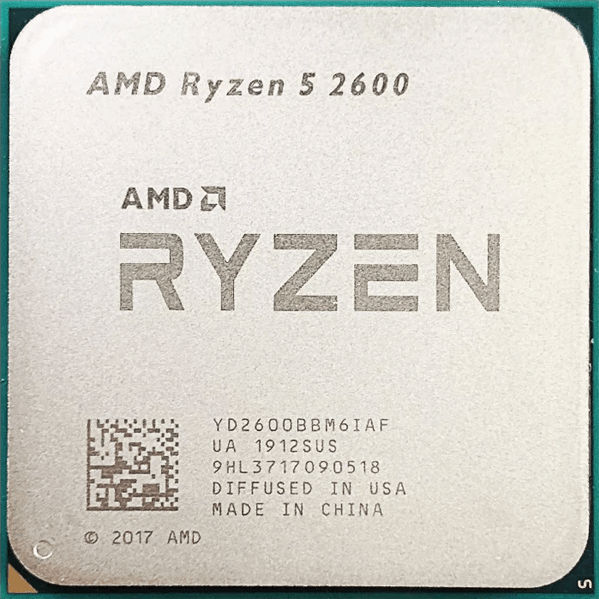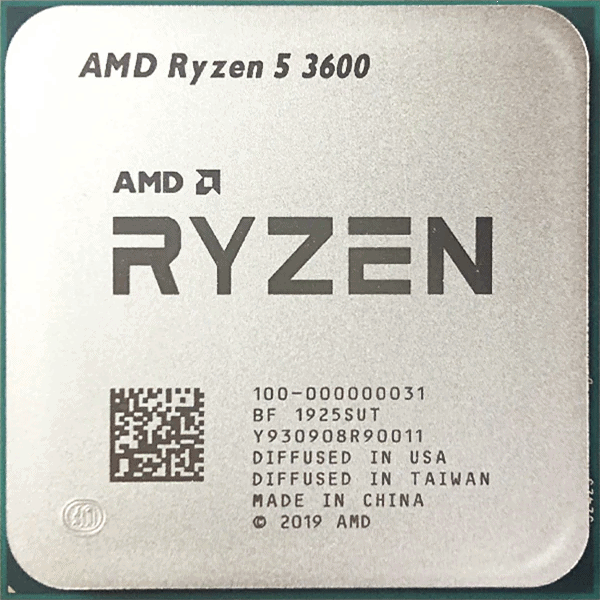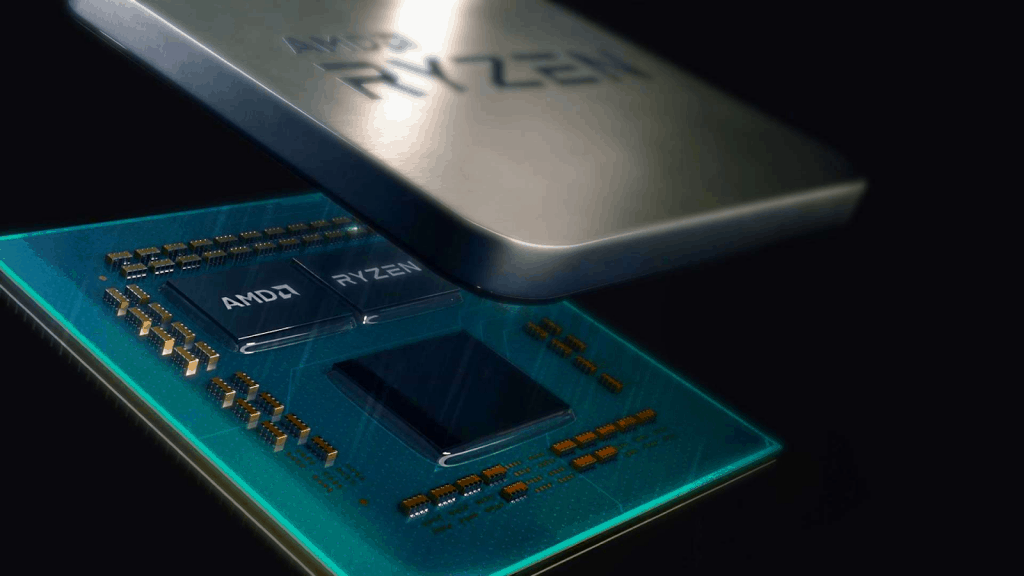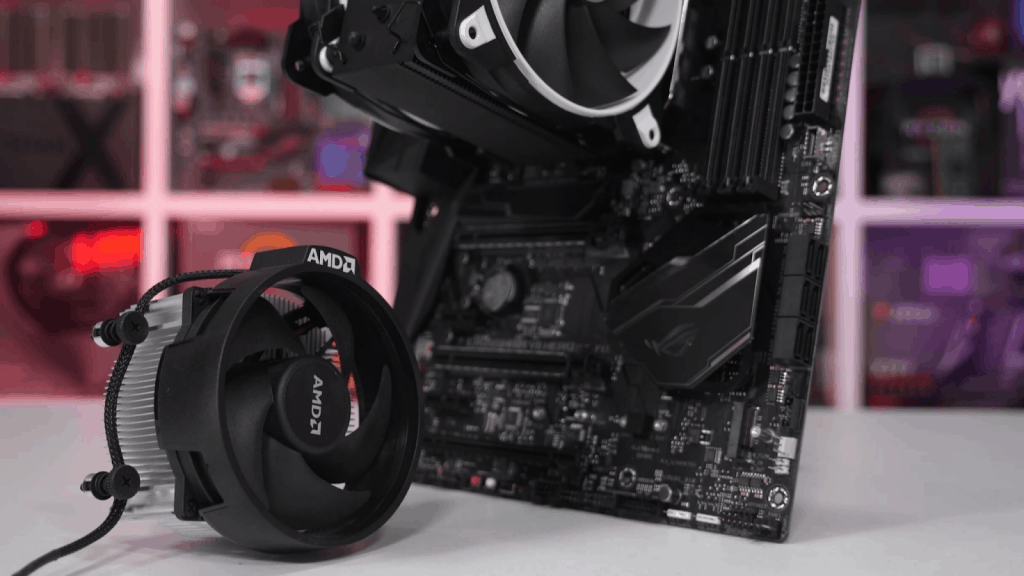The advances in the computing industry are rapid and they affect the entire market.
You might even be happy with your current CPU but, as soon as a new generation drops, you’ll start asking yourself if what you have is enough. And, when exploring new options, there is always the dilemma of going for slightly older CPUs that stand the test of time magnificently or looking at new ones that are more future-proof but pricey.
That’s definitely the key dilemma when comparing Ryzen 5 2600 vs 3600, AMD’s processors from the same family but different generations.
As you’re about to see, the differences between these two CPUs might not be as significant as one might think.
Ryzen 2600 vs 3600 – The basics
Ryzen 5 2600 is a hexa-core (6-core) processor from AMD’s second generation. It’s a significant improvement over the previous generation, especially in base and max boost clock speeds.

Pros:
- Equal number of cores and threads to its younger counterpart
- High base and boost clock speeds
- A lot of cache memory allows for quicker data retrieval
- More cost-efficient
Cons:
- Supports less RAM memory
- Might become outdated soon
Ryzen 5 3600 is a third-generation (Zen 2 microarchitecture) processor released in mid-2019. It features high clock speeds, lots of cache memory, and supports more RAM – all that with an impressively low power consumption profile.

Pros:
- Higher clock speed without an additional energy cost
- Smaller semiconductor size provides for better performance
- Allows for more (and faster) RAM
- Better single-core performance
Cons:
- More expensive
- The same memory latency as its older counterpart
| Features | Ryzen 5 2600 | Ryzen 5 3600 |
|---|---|---|
| Launch date | April 19, 2018 | July 7, 2019 |
| Series (CPU architecture) | Zen+ | Zen 2 |
| Number of cores | 6 | 6 |
| Number of threads | 12 | 12 |
| Base clock | 3.4 GHz | 3.6 GHz |
| Max boost clock | 3.9 GHz | 4.2 GHz |
| Semiconductor size | 12nm | 7nm |
| Max temperature | 95oC | 95oC |
| RAM speed | 2933MHz | 3200 MHz |
| L1 cache | 576KB | 384KB |
| L2 cache | 3MB | 3MB |
| L3 cache | 16MB | 32MB |
| TDP | 65W | 65W |
Key specifications
Now let’s get into the key specifications of Ryzen 2600 and 3600, and see how they measure up against each other.
Cores and threads – a numbers game
The number of cores and threads is usually among the most important indicators of a CPU’s processing power. Generally, the more cores and threads, the better the performance. This may or may not be reflected in clock speeds, memory latency, and other indicators.
However, even if these numbers are around the same, the safer bet is almost always to go with a processor that has more cores. New programs, especially demanding programs like 3D modeling and video rendering, run on multiple cores so a 6-core processor will likely run them more easily than a 4-core one.
Threads, on the other hand, are virtual components (code) that divide the physical cores of a processor into multiple virtual cores. A CPU can have up to two threads per core. While they don’t matter as much as cores, more threads will usually make it easier for your PC to run multiple tasks at once.
In this area, the 2600 and 3600 are tied – they both have 6 cores and 12 threads.
Single-core and multi-core performance results
The number of cores and threads by itself isn’t enough to determine how much computing power a CPU can actually get from those components.
We need to take a deeper look and see how these two CPUs compare when it comes to core performance – both in single-core and multiple-core tests.
As expected, the newer, upgraded Ryzen 5 3600 fares better in all tests. The 2600 does have some impressive results and is definitely no slouch but it can’t really come close to its successor in single-core, dual-core, or quad-core tests.
The 3600 is a clear winner in this category as it gets more power out of the same number of cores.
Comparing clock speeds
Another “juicy” stat that people like to look at when comparing CPUs is base clock speed and max boost clock speed.
A CPU’s clock speed signifies how quickly it can retrieve instructions and interpret them. It’s generally accepted that higher clock speeds result in faster performance but the issue is not that straightforward when comparing processors with a different number of cores.
Luckily, that’s not the case here so we can compare Ryzen 2600 and 3600 with solid accuracy. The 2600 has a 3.4 GHz base clock speed and can be boosted up to 3.9 GHz. The 3600 starts at 3.6 GHz and can go up to 4.2 GHz.
The “max boost” terminology refers to your maximum frequency when the CPU is running a demanding program. It’s a burst rather than a default state but it’s still nice to know that your PC can deliver in these moments.
Taking all these things into account, it’s clear that the Ryzen 3600 is the winner in this category. Not only does it have a higher base clock speed but its boost is marginally more significant (a 0.6 GHz increase compared to 0.5 GHz in the 2600).
Semiconductor size – the smaller, the better
One of the main reasons why the Ryzen 5 3600 outperforms the 2600 in almost every category is likely because it has smaller semiconductors.

People don’t tend to talk about semiconductors and transistors as much but they’re pretty crucial components of a CPU. In fact, the global tech hub, Silicon Valley got its name after the substance that makes up semiconductors!
In short, smaller semiconductors provide improved performance at reduced power consumption. The smaller they are, the more can fit on a single chip, leading to better performance. It’s a fine science that gets more precise and impressive over time which is exactly why newer CPUs are often at an advantage in this category.
That’s exactly why the Ryzen 3600 is the winner in this category. It has 7-nanometer semiconductors compared to 2600’s 12-nm ones which are pretty much standard size.
A narrow difference in cache memory
Cache memory is a small, easily accessible memory slot for your CPU. It’s used to facilitate retrieval of frequently accessed data or, in simpler terms, to speed up some basic processes that your CPU executes more frequently than others.
Cache memory is usually sorted into three levels: L1, L2, and L3. The first level is the smallest and the quickest while L3 is the complete opposite. Generally, you won’t see a big difference in performance in processors with similar cache sizes, especially if their L1 is the same.
The Ryzen 3600 and 2600 are quite close in this category, with their L1 and L2 being identical. The 3600 is at a slight advantage since its L3 is 32 MB (compared to 16 MB in the 2600) but, as mentioned, this is likely not a significant difference.
CPU temperature and TDP
CPU temperature and TDP (Thermal Design Power) are both related to temperature and power consumption.
The CPU temperature refers to the maximum temperature a processor can handle before it starts to experience problems like sudden shutdowns. TDP, on the other hand, is a measure of the maximum amount of heat that a CPU can generate under maximum theoretical load.

You can use these two metrics to gauge how much power and heat a processor will consume or generate. More powerful CPUs will usually generate more heat and require more cooling power.
However, even though Ryzen 3600 is obviously the more powerful processor, its TDP is identical to its predecessor: 65W. The same goes for max CPU temperature – it’s tied at 95oC. This just tells us that AMD did a great thing here by creating a more powerful processor through sheer innovation without increasing its power consumption.
So it’s a tie in this category but we’re definitely impressed with the 3600!
Standout Features
Here are some very important points to cover before we reach our final verdict: the standout features that make a big difference.
Ryzen 5 3600 is at a massive RAM advantage
A big point for the 3600 is the fact that it supports up to 128 GB of RAM while the 2600 only goes up to 64 GB.
Granted, more than 64 GB would be overkill for gaming but, if you’re running complex programs like Cinema 4D, After Effects, etc. – 128 GB will produce a big difference in performance.
It’s also worth mentioning that the 3600 supports marginally faster RAM speeds – 3200 MHz compared to 2933 MHz.
Is the Ryzen 5 3600 really that much more future-proof?
Reading this article, you’ve probably already reached a conclusion that Ryzen 3600 is the newer, more powerful processor. While that may be the case, the crucial question is: Is it worth the extra cost in the long run?
The answer to this question is blurry but here’s a big point for the Ryzen 2600: both of these CPUs use the same socket, the AM4. And, when the Zen4 generation gets released it will introduce us to the AM5 socket, making your AM4 motherboard obsolete going forward.
In other words, if you really want to make a leap, it might be best to wait for the next generation and go all-in. For now, Ryzen 2600 might be just enough.
The final word – Ryzen 5 2600 vs 3600
Our Ryzen 2600 vs 3600 review was far from inconclusive when it comes to performance: the 3600 is clearly the more powerful choice.
However, the question remains whether its increase in processing power over the 2600 (which is already a really good CPU) justifies the extra cost, having in mind that both of them will soon be a little more outdated.
Ultimately, if you’re really looking for that extra edge, and especially if you want to add more RAM for heavy programs, Ryzen 3600 is definitely the better choice.
If you just want a powerful processor for mid-to-high range gaming at a decent price, you can’t go wrong with the Ryzen 2600. You can pocket the extra cash and upgrade your GPU!